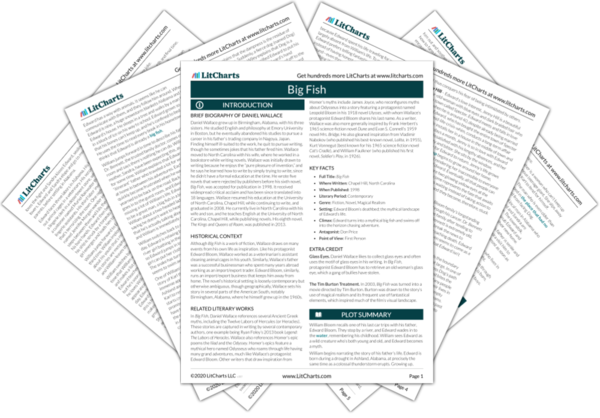Next
Summary
Big Fish Study Guide |
Next
Summary
|
Welcome to the LitCharts study guide on Daniel Wallace's Big Fish. Created by the original team behind SparkNotes, LitCharts are the world's best literature guides.

Glass Eyes. Daniel Wallace likes to collect glass eyes and often uses the motif of glass eyes in his writing. In Big Fish, protagonist Edward Bloom has to retrieve an old woman’s glass eye, which a gang of bullies have stolen.
The Tim Burton Treatment. In 2003, Big Fish was turned into a movie directed by Tim Burton. Burton was drawn to the story’s use of magical realism and its frequent use of fantastical elements, which inspired much of the film’s visual landscape.